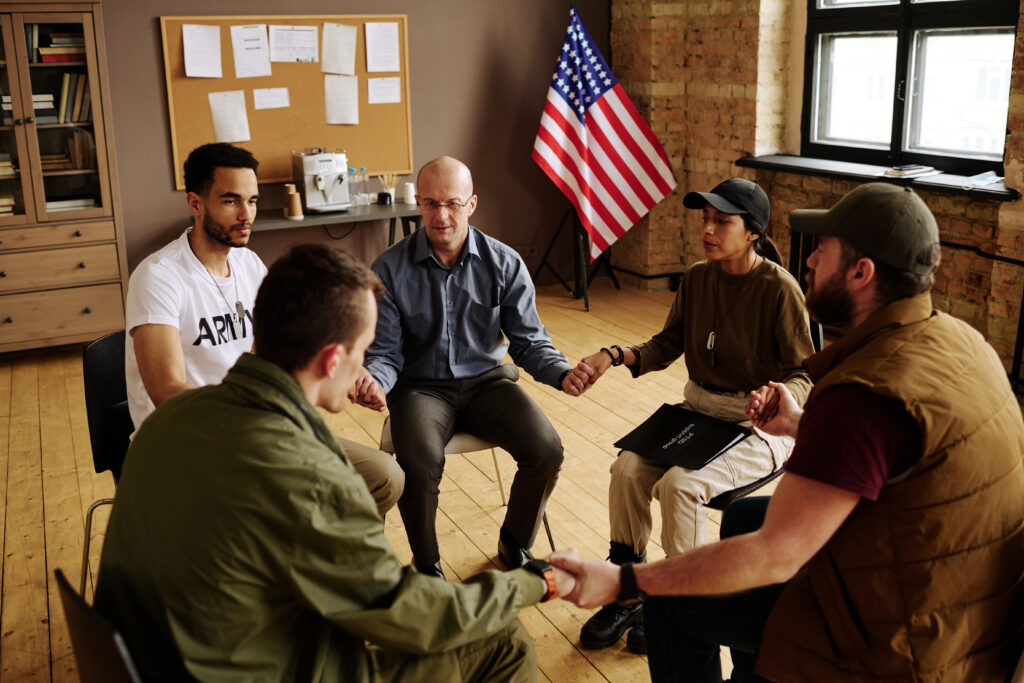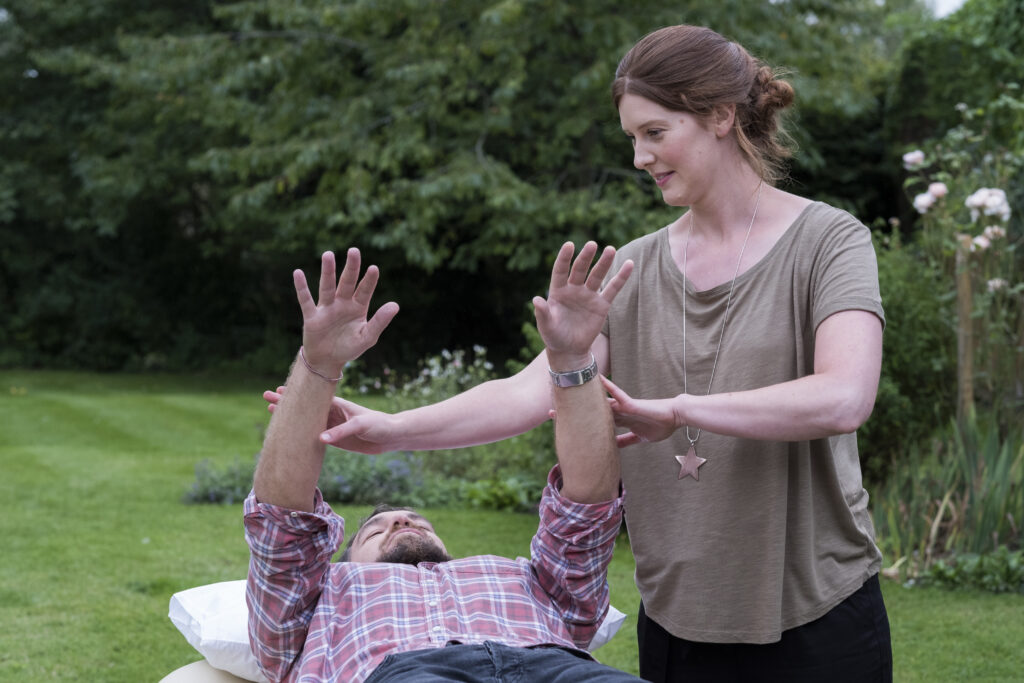Types of Therapy Available for First Responders
3/6/2025 by Markie Bryant

First responders, such as firefighters, police officers, and paramedics, face unique challenges due to the nature of their work. They often encounter traumatic events that can take a toll on their mental health. It’s crucial for them to have access to various types of therapy to help them cope and recover. This article explores the different therapy options available for first responders, including traditional and alternative methods.
Key Takeaways
- Intensive Outpatient Programs (IOPs) offer flexible treatment options for first responders, allowing them to balance work and family life while receiving care.
- Peer support and 12-step groups provide a sense of community and accountability, helping first responders share their experiences and challenges with others who understand.
- Trauma-informed therapies like Cognitive Behavioral Therapy (CBT), Narrative Therapy, and Eye Movement Desensitization and Reprocessing (EMDR) are effective in treating PTSD in first responders.
- Alternative therapies, such as equine therapy, sensory modulation therapy, yoga, tai chi, and art therapy, offer creative and physical outlets for healing and stress management.
- Finding the right therapist, considering factors like specialized training, location, and availability, is essential for effective treatment. Employee Assistance Programs (EAPs) can also be valuable resources.
Intensive Outpatient Programs for First Responders
Intensive Outpatient Programs (IOPs) offer a flexible treatment option for first responders who need help but also have to keep up with their daily lives. These programs are designed to tackle the unique stressors and difficulties that officers, paramedics, firefighters, and other first responders face. IOPs allow first responders to get treatment while maintaining family obligations.
Peer Support and 12-Step Groups

Creating a Sense of Community
Peer support programs are essential for first responders. These programs include peer support workers who have experienced similar challenges. This shared experience helps create a strong sense of community, making it easier for first responders to open up and seek help.
Accountability Among Peers
In 12-step groups, accountability is a key component. Members are encouraged to support each other and hold one another accountable for their actions. This mutual support system fosters a sense of responsibility and commitment to recovery.
Sharing Experiences and Challenges
First responders often face unique challenges that others may not understand. In peer support and 12-step groups, they can share their experiences and struggles with others who have been through similar situations. This sharing can be incredibly therapeutic and validating.
Peer support and 12-step groups offer a safe space for first responders to connect, share, and heal together.
Trauma-Informed Therapy Techniques

Cognitive Behavioral Therapy (CBT)
Cognitive Behavioral Therapy (CBT) is a widely used method for treating trauma in first responders. CBT helps individuals identify and change negative thought patterns that contribute to their distress. By focusing on the connection between thoughts, feelings, and behaviors, CBT aims to develop healthier ways of thinking and coping.
Narrative Therapy
Narrative Therapy allows first responders to reframe their traumatic experiences by telling their stories in a new light. This technique helps them separate their identity from their trauma, empowering them to see themselves as survivors rather than victims. Through guided storytelling, individuals can find new meanings and perspectives on their experiences.
Eye Movement Desensitization and Reprocessing (EMDR)
Eye Movement Desensitization and Reprocessing (EMDR) is a structured therapy that involves processing traumatic memories while moving the eyes in specific ways. This technique aims to help first responders process distressing memories and change the negative emotions, behaviors, and thoughts associated with them. EMDR therapy includes eight phases:
- History taking and treatment planning
- Preparation and introduction of EMDR
- Assessing the target memory
- Desensitization
- Installation
- Body scan
- Closure
- Re-evaluation
EMDR is a common technique used to treat PTSD and other forms of trauma in first responders.
Alternative Therapies for Healing

Equine Therapy
Equine therapy, also known as Equine-Assisted Therapy (EAT), involves activities with horses to help people grow emotionally and physically. This therapy can boost confidence, communication, and trust. Horses have behaviors similar to humans, making it easier for people to connect with them.
Sensory Modulation Therapy
Sensory Modulation Therapy is an innovative approach that helps first responders manage stress and anxiety by using their senses. This therapy involves activities that stimulate the senses—such as touch, sound, sight, and smell—to help individuals regulate their emotions and physical responses to stress. For instance, using weighted blankets, listening to calming music, or engaging with specific textures can have a grounding effect, helping to reduce anxiety and improve focus.
The goal of Sensory Modulation Therapy is to help first responders become more aware of their sensory experiences and learn how to use these experiences to modulate their emotional and physiological responses to stress. By incorporating sensory activities into their daily routine, first responders can develop practical tools for managing stress, promoting relaxation, and improving their overall well-being.
This therapy is particularly beneficial for those who struggle with hyperarousal symptoms, such as being easily startled or feeling constantly on edge. By targeting the sensory pathways, it helps to calm the nervous system, making it easier to cope with the high-stress situations first responders often face.
Yoga and Tai Chi
Yoga and Tai Chi are great for reducing stress and improving overall well-being. These practices help people become more aware of their bodies and minds. They can also increase flexibility and strength, making them excellent for both mental and physical health.
Art and Adventure Therapy
Art therapy uses creative activities like drawing and painting to help people express their feelings. Adventure therapy involves outdoor activities that challenge people physically and mentally. Both types of therapy offer unique ways to cope with stress and trauma.
Alternative therapies allow first responders to manage and heal from mental health problems by tapping into their physical or creative sides.
Finding the Right Therapist and Resources
For first responders dealing with trauma, finding the right therapist is crucial. A therapist who specializes in high-stress professions can make a big difference.
Support Organizations for First Responders
First responders face unique challenges and stressors in their line of work. Thankfully, there are several organizations dedicated to providing support and resources to help them cope with these demands. Here are some key organizations that offer various forms of assistance to first responders and their families.
Understanding Trauma in First Responders

Impact of Trauma on Mental Health
First responders, like firefighters, police officers, and EMTs, often face intense situations that can lead to trauma. This trauma can come from witnessing or experiencing violence, accidents, natural disasters, and other life-threatening events. Recognizing the profound impact of trauma is essential, particularly in the context of first responders who are routinely exposed to traumatic events. These experiences can have lasting effects on the brain and nervous system, causing symptoms like anxiety, nightmares, flashbacks, and avoidance behavior.
Symptoms of PTSD
First responders are especially vulnerable to PTSD due to the nature of their work. They often encounter dangerous and unpredictable situations, making split-second decisions that can have life-or-death consequences. Common symptoms of PTSD include:
- Anxiety
- Nightmares
- Flashbacks
- Avoidance behavior
Challenges Faced by First Responders
First responders may feel pressure to suppress their emotions and maintain a tough exterior, leading to feelings of isolation and burnout. Trauma can also affect the brain and neuropathways, making the brain hyper-reactive to perceived threats. This heightened anxiety and stress can make it difficult for first responders to cope with their job demands and affect their overall mental health and well-being.
Understanding the impact of trauma on first responders is crucial for developing effective interventions to help them cope and recover. By recognizing the unique challenges they face, therapists can create tailored approaches to therapy that address their specific needs.
Somatic Experiencing (SE) Therapy

Principles of Somatic Experiencing
Somatic Experiencing (SE) is a body-oriented therapeutic model that helps people heal from trauma by focusing on physical sensations. This therapy aims to release physical tension and emotional trauma stored in the body. By working with a trained SE therapist, individuals can learn to identify and gradually release these sensations.
Body-Focused Exercises
During SE sessions, therapists guide individuals through various body-focused exercises. These may include deep breathing, gentle movement, or muscle relaxation. These exercises help regulate the nervous system, making individuals feel more grounded and less reactive to triggers.
Combining SE with Other Therapies
SE therapy is often used alongside other therapies like EMDR or mindfulness-based approaches. Combining different therapies provides a range of tools and resources for healing. This integrated approach can be especially beneficial for first responders dealing with trauma.
If you are a first responder struggling with trauma, seeking a therapist trained in SE and other trauma-focused therapies can be a crucial step towards healing.
Conclusion
First responders face unique challenges that can take a toll on their mental health. Thankfully, there are many types of therapy available to help them cope with the stress and trauma they experience. From intensive outpatient programs and peer support groups to trauma-informed therapies and alternative treatments like yoga and art therapy, there is a wide range of options to suit different needs. It’s important for first responders to seek help and take advantage of these resources. By doing so, they can improve their mental well-being and continue to serve their communities effectively. Remember, reaching out for help is a sign of strength, not weakness.
Frequently Asked Questions
What is an Intensive Outpatient Program (IOP) for first responders?
An IOP allows first responders to get treatment while still living at home. They can attend therapy sessions and get help for mental health or substance abuse issues without having to stay in a hospital or clinic.
How do peer support and 12-step groups help first responders?
These groups create a sense of community and accountability. First responders can share their struggles and experiences with others who understand what they’re going through.
What is Cognitive Behavioral Therapy (CBT)?
CBT is a type of talk therapy that helps people change negative thought patterns and behaviors. It’s often used to treat PTSD and other mental health issues in first responders.
What are some alternative therapies for first responders?
Alternative therapies include equine therapy, yoga, Tai Chi, and art therapy. These methods help first responders manage stress and heal by engaging their physical or creative sides.
How can I find the right therapist for a first responder?
Look for a therapist who specializes in working with first responders and understands their unique challenges. Consider factors like location, availability, and whether they accept your insurance.
What organizations support first responders?
Several organizations offer support, such as 911 At Ease International, Bulletproof, and the National Volunteer Fire Council (NVFC). These groups provide resources and help for mental health and other issues.